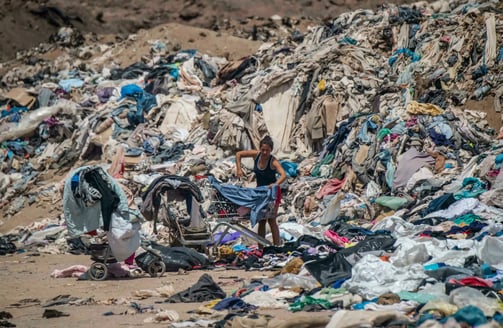Textile Industry And Environment
The shirt, and the pants you are wearing every day, try to use them as long as possible. The textile industry is the second most polluting industry in the world.
10/31/20221 min read
According to Lenzing Group, the world consumption of textiles and garments in 2015 amounted to 95.6 million tons.
62.1% of these clothes are oil-based synthetic fibers such as polyester, 25.2% are cellulosic and protein-based fibers, 6.4% are wood-based cellulose fibers, and 1.2% are fibers. wool and 1.5% other natural fibers.
Water pollution: Normally, to make 1kg of fiber, it takes up to 200 liters of water. There is a need to use a lot of water in the yarn production process including, washing the yarn, bleaching, dyeing, and then cleaning the final product. In addition, the cotton plant itself consumes up to 19,000 liters of water to provide enough raw materials for the production of a T-shirt.
A large amount of water used and discharged in the production process is the cause of toxicity for living organisms in the water at the source, including toxic organic chemicals, toxic anions, salts, and ionic metals. , metal complexes, bio oxides, and surfactants.
Air Pollution: Air pollution factors in this industry include: Nitrous oxide and sulfur dioxide generated during the energy generation phase; Volatile organic compounds (VOCs) generated during coating, drying, and wastewater treatment; Impurities generated during cotton processing; Alinin vapors, chlorine, and chlorine dioxide... are generated during dyeing and bleaching...
Solid Waste Pollution: Globally, about 90 million items of clothing are dumped in landfills each year. Some of the common solid contaminants of the garment industry include lint, excess yarn, wax, scrap metal, greasy rags, etc.


Address
101 Block B, Tran Quoc Thao Apt, Ward 9, Distric 3, HCM City
Contacts
M: 0888320809
E: thocampieu@gmail.com
